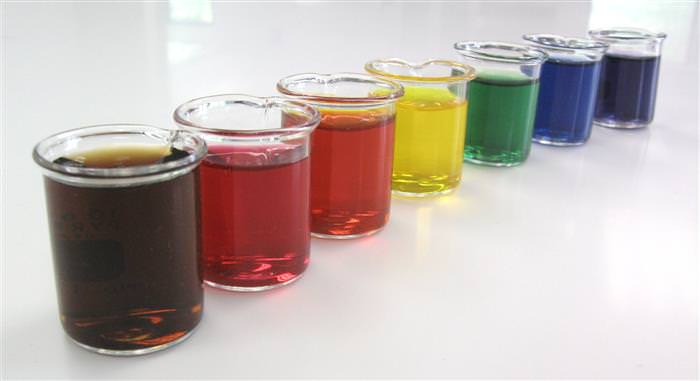9 Food Ingredients to Avoid
As wise consumers, we know how to compare
prices and save on money, but do we know what we actually put in our
body? While food manufacturers must provide a list of ingredients on the
packaging, they tend to use terms that can fool us into thinking we’re
buying something healthy when it’s actually far from it. Next time you
go grocery shopping, remember these 9 ingredients that you should
absolutely avoid.
1. Completely / Partially Hydrogenated Oil
Hydrogenated oil is a vegetable oil that was hardened by adding trans
fats in order to extend its lifespan. It is most commonly found in
industrial baked goods, such as cookies and biscuits, as well as in
margarine. Several studies have showed a connection between the trans
fats in hydrogenated fat and a higher risk of heart disease, accelerated
arterial blockage, raised blood pressure and higher LDL cholesterol. In
many cases, the trans fats were replaced with coconut or palm oils, but
these are not healthy either, thanks to their high content of saturated
fats.
2. Phosphoric Acid
Phosphoric acid is used in creating salts, increasing the water content
of meat products, and is also used in soft drinks. It is also used in
cleaners and detergents as well as rust and plaque removers. When it
comes to our body, this acid can wreak havoc on our hard tissues – it
erodes the enamel in our teeth and reduces bone density. We highly
recommend that you avoid any product that contains this ingredient.
3. Potassium Bromate


Our warning regarding this ingredient can be confusing, as potassium is
recommended for consumption, but potassium bromate is a different
substance. It’s a chemical that is used in industrial production of
bread to make it rise and stabilize it. In the European Union, it is
illegal to add it to any food. Potassium bromate causes nausea,
vomiting, stomachaches, and diarrhea. Adding it to bread destroys the
vitamin E content in it. It’s very common in plain white bread, so make
sure you read the ingredients before purchasing a loaf.

4. Sodium
Most people think that sodium refers to salt, but only sea salt is
healthy for consumption, while plain sodium is a plain white salt that
is free of minerals. The maximum recommended amount for daily
consumption of sodium is 2.4 grams, but children ages 7-18 shouldn’t
have more than 1.2 grams, and children 6 and under shouldn’t have more
than 0.7 grams a day. Exceeding these amounts can lead to kidney
failure, cardiovascular diseases, and even strokes.
5. Acrylamide
Acrylamide is essential in the construction of paper, plastic, and paint
products. Researchers found that it could appear in certain foods that
were heated to over 120°C (248°F), including fries and bread. Inside the
body, this chemical causes irritation in the mucosa membranes, can
damage the nervous system, and is even suspected to be a carcinogen.
6. Artificial Coloring

We all know that artificial colorings are added to our food, and many
people are probably aware of their potential harm, but until you can
spot them, this knowledge won’t do you much good. Food colorings are
marked with the letter ‘E’, and a number between 100 and 199. E124 is
known to exacerbate hyperactivity in children, E142 was found to be a
carcinogen, and you should avoid any yellow, blue, and silver colors
altogether.
7. Monosodium Glutamate (MSG)
Hearing the name ‘monosodium glutamate’ or “MSG” is often a warning
sign, but it is widely used in the food industry. It’s very common in
processed foods, powders, canned goods and premade sauces. Consuming
more than 3 grams of MSG on an empty stomach can damage the nervous
system. It appears under other names, such as:
Sodium 2-aminopentanedioate
Glutamic acid, monosodium salt, monohydrate
L-Glutamic acid, monosodium salt, monohydrate
L-Monosodium glutamate monohydrate
Monosodium L-glutamate monohydrate
MSG monohydrate
Sodium glutamate monohydrate
UNII-W81N5U6R6U
8. High Fructose Corn Syrup (HFCS)
This is a liquid form of sugar that is extracted from corn and has
almost no nutritional value. HFCS is very cheap to produce, making it
the preferred sweetener for many manufacturers. The American FDA found
that HFCS contains mercury, which can interrupt nerve signals.
Nutritionists and physicians around the world recommend abstaining from
HFCS in all its forms. It’s often found in ketchup, cereals, barbecue
sauce, energy bars, ice creams, and many other products.
9. Sodium Nitrate
This substance is mostly used in the meat industry, as it gives the meat
a redder color. Research shows a direct correlation between high levels
of sodium nitrate and developments of Alzheimer’s, diabetes, and
Parkinson’s. It is believed that the cause is that sodium nitrate
damages the structure of DNA. Furthermore, it is also linked to gastric,
esophageal, and colon cancers, and should be avoided entirely.